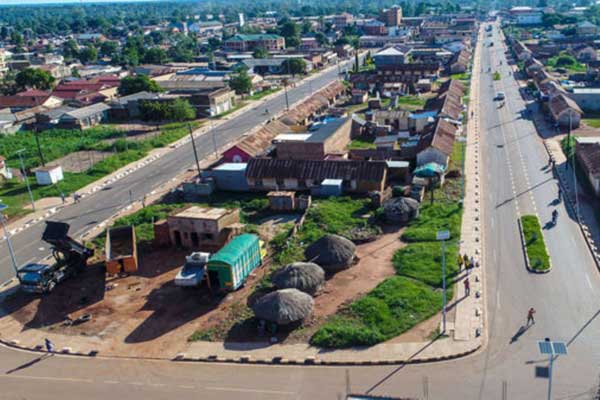Gulu reaps big from digital revenue collection system

An aerial view of a section of Gulu City. Photo | Courtesy
What you need to know:
- In the 2019/2020 Financial Year, Gulu Municipality projected to collect Shs4.8 billion but only put together Shs1.6 billion while in the 2020/2021 Financial Year, it realised only Shs1.8 billion, out of the projected Shs4.7 billion.
Gulu City Council is currently reaping big from its new digital revenue collection programme, the Daily Monitor has learnt.
Following the local revenue collection drop in the past 10 years, the Gulu City Council recently phased out the physical collection of local revenue.
In the 2019/2020 Financial Year, Gulu Municipality projected to collect Shs4.8 billion but only put together Shs1.6 billion while in the 2020/2021 Financial Year, it realised only Shs1.8 billion, out of the projected Shs4.7 billion.
In this Financial Year 2021/2022, the city targets to raise Shs3.8 billion but authorities say it could have realised Shs4 billion if it was not because of the lockdown.
Speaking in an interview, Mr Alfred Okwonga, the city mayor, said the new system is a turning point in the revenue collection efforts with so far close to Shs1 billion realised in only three months.
“We stopped the traditional methods of collecting money physically where receipts are issued and brought this online payment system in place,” Mr Okwonga said.
He added that the system was introduced to offer quality services.
A fortnight ago, the City Council unveiled a five-year strategic plan that is intended to guide and streamline the local revenue collection and mobilisation in a bid to hit the Shs10 billion target by the 2025/2026 Financial Year.
“The revenue enhancement plan started in April with the engagement of the business community, political leadership and technocrats,” Mr Moses Otimong, the town clerk, said.
The revenue enhancement plan, which is part of the government’s reforms to digitise revenue management, was formulated with support from Oxfam International Uganda and Southern and Eastern Africa Trade Information and Negotiations Institute.
He said the city leadership rolled out the Integrated Revenue Administration System (IRAS) to carry out registration, assessment, billing and collection of revenue.
According to the system, once particulars of a business enterprise are entered, a payment registration code is automatically generated, the code can be used to effect payment of taxes using mobile phones.
IRAS was developed with support from the World Bank through PPIAF Trust Fund. It was first piloted in Nansana, Fort Portal and Gulu City. Currently, it is also operational in Amuria, Yumbe, Zombo and Adjumani.
Mr Geoffrey Oyoo, the senior finance officer, said: “The physical revenue collection method that we stopped was marred with bribery and duplication of receipts by some town agents.”
The old system also suffered a lack of updated revenue registers, unclear revenue mobilisation guidelines for some sources and limited involvement.
“The city requires more funds for service delivery and we cannot depend on funds from the government alone. There are so many impassable roads yet the Shs1.5 billion issued to us by the central government is not enough,” he said.
While speaking during the launch of the IRAS in Gulu recently, Mr Francis Odokorach, the Oxfam’s country director, said the city will be able to collect revenue only if there are clear plans that target women and youth.
“Generating taxes are about taxing the profits of enterprise but to the people, once taxes target people it becomes regressive. The high youth population is a dividend to the city authorities if well utilised and planned for,” he said.
In July, the city conducted a fresh valuation of property tax to expand its revenue base.
The exercise was aimed at registering all the properties and businesses within the city to widen its revenue base as well as ascertain the cost analysis for new tax reforms for businesses and properties.
However, as Council struggles to widen the revenue spectrum, the projected local revenue collection in the city for the next financial year has fallen below by more than Shs 900 million from Shs 4.7 billion.
The Council has allocated Shs 13.7 billion to the education sector for the construction of teachers’ houses, classrooms and latrines.
However, Shs 70 million of the funds will cater for the construction of teachers’ houses at Pece Primary School, 64.5 million for the construction of three classrooms at Christ the King Demonstration School.
St. Kizito Aywee Primary School was allocated Shs 26 million for the construction of five stances of latrines with the biggest funds for the developments being targeted from the local revenues.




